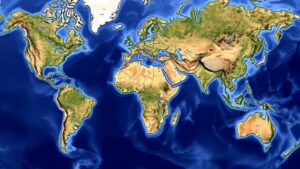Combining NOAA Tools with Historical Maps to Predict Artifact Hotspots
Combining NOAA Tools with Historical Maps to Predict Artifact Hotspots
The integration of modern technology with historical data has revolutionized the field of archaeology. The National Oceanic and Atmospheric Administration (NOAA) provides tools that assist in understanding environmental changes and can be effectively combined with historical maps to predict archaeological artifact hotspots. This article explores the methodologies, applications, and implications of such an integrated approach within the domain of heritage management and archaeological research.
The Importance of Historical Maps in Archaeology
Historical maps hold significant value in archaeology as they provide insight into past human activities, landscape changes, and settlement patterns. For example, the 1880 Sanborn Fire Insurance Maps document urban development and land use, which can reveal potential locations of past human activity. By overlaying these maps onto modern geographic information systems (GIS), archaeologists can identify areas of interest where artifacts are likely to be found.
NOAA Tools: Applications and Capabilities
NOAA offers various tools and datasets that, when combined with historical maps, enhance archaeological investigations. Two particularly relevant tools include:
- NOAAs Digital Coast: This initiative provides access to coastal data and visualization tools. Its datasets include historical shoreline data that can show changes over time, indicating areas where human activity might have been concentrated.
- Office for Coastal Management (OCM): The OCM manages a range of datasets, including topography and bathymetry, which are crucial for understanding past settlement patterns in coastal areas susceptible to flooding or erosion.
Utilizing these tools allows researchers to create predictive models that outline likely artifact hotspots based on past environments and human settlement locations.
Case Studies: Successful Applications
Numerous studies have successfully implemented the combination of NOAA tools and historical maps. For example, a study conducted in 2017 in Southern California examined the intersection of historical shoreline maps with NOAAs Coastal Services Center data. The researchers utilized GIS to predict the locations of Native American artifact sites along coastal areas that experienced significant topographical changes over centuries due to rising sea levels.
In another case, the state of Florida utilized NOAA’s bathymetric data along with historical maps of coastal towns established in the 19th century. analysis led to the discovery of submerged settlements, demonstrating that artifacts could remain preserved underwater, further broadening the potential for archaeological investigation.
Challenges and Considerations
While combining NOAA tools with historical maps presents numerous advantages, several challenges must be addressed:
- Data Accuracy: The precision of historical maps can vary, and integrating them with contemporary data requires careful calibration to prevent misinterpretation.
- Environmental Changes: Ongoing shifts in climate and human activities can alter landscapes unpredictably, complicating predictions based on historical data.
- Interdisciplinary Collaboration: Successful integration relies on collaboration among geographers, historians, and archaeologists, which can pose challenges in communication and methodology.
Conclusion and Future Directions
The combination of NOAA tools and historical maps represents a powerful methodology for identifying artifact hotspots. Through the effective use of GIS technology and collaboration among various disciplines, archaeologists can substantially enhance their predictive capabilities. Future research might explore the integration of machine learning algorithms with these datasets to improve prediction accuracy further.
As data becomes increasingly available, and as technological advancements in mapping continue, the promise of this integrated approach in archaeology will likely grow, leading to a deeper understanding of our shared history and the preservation of cultural heritage for future generations.


